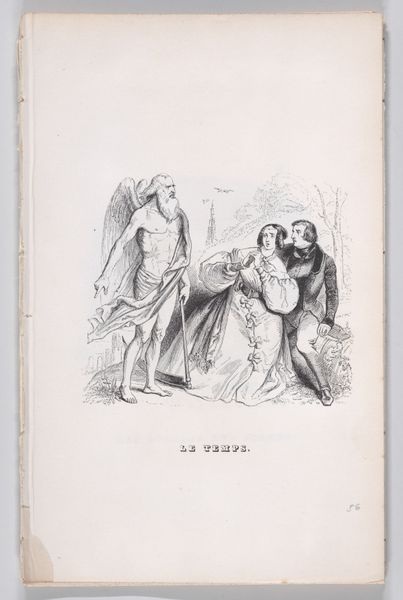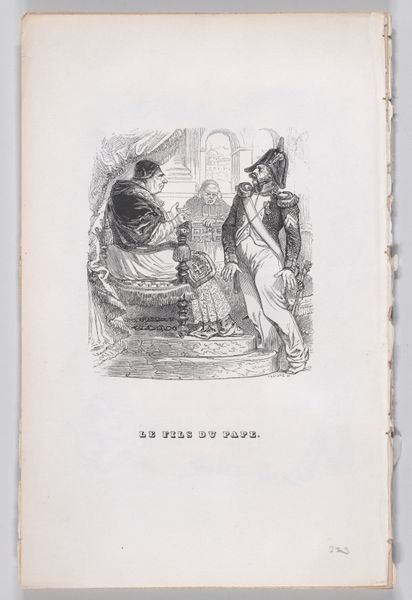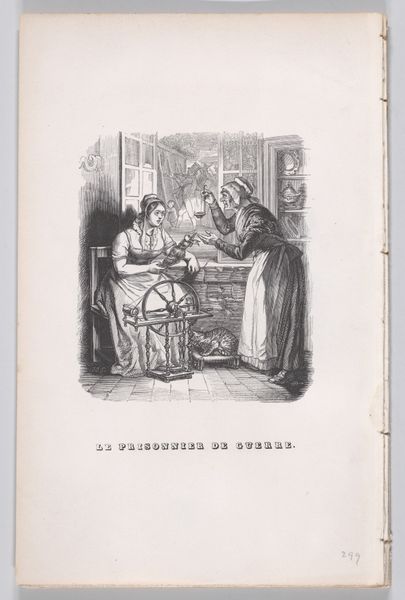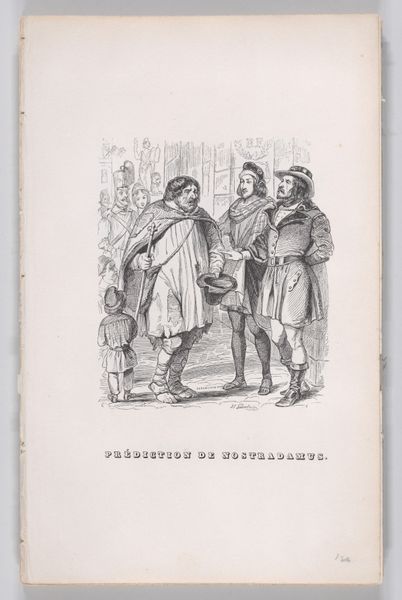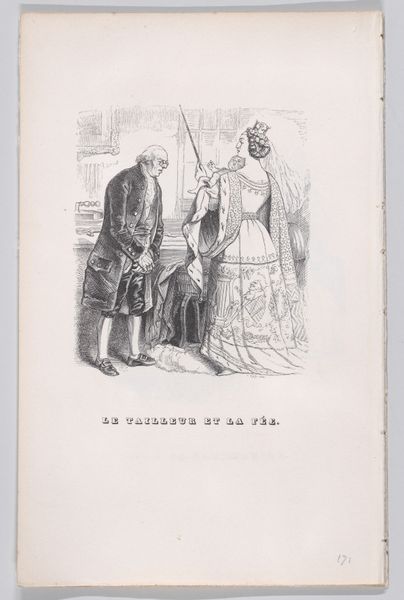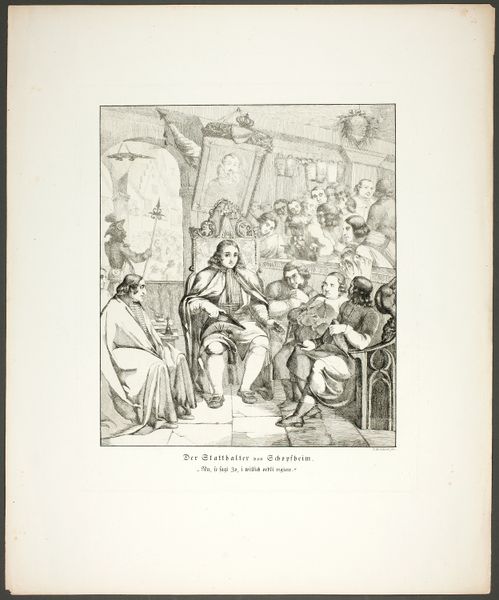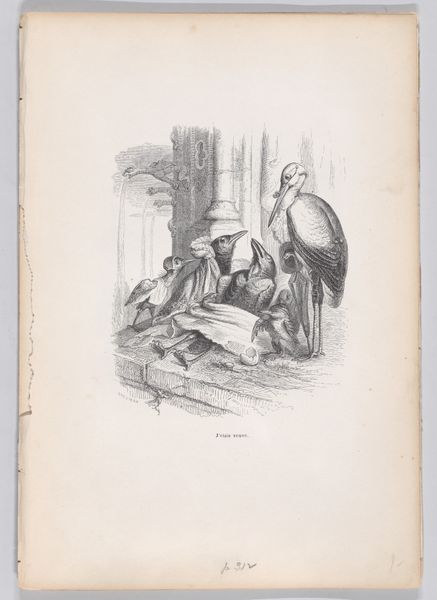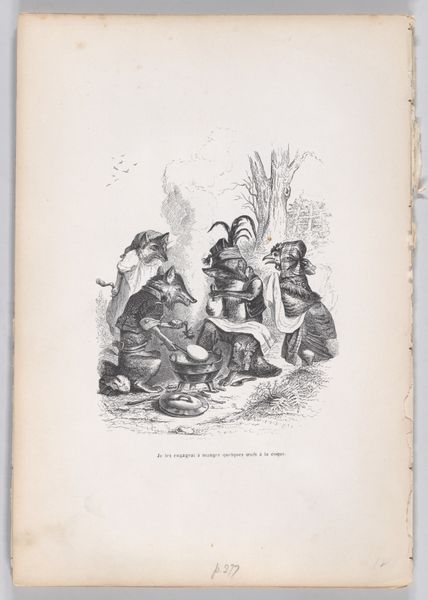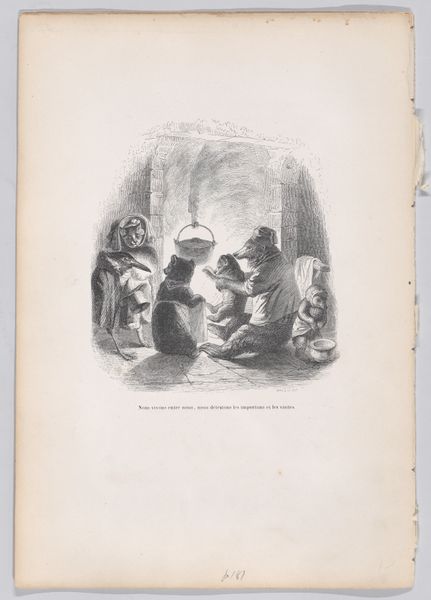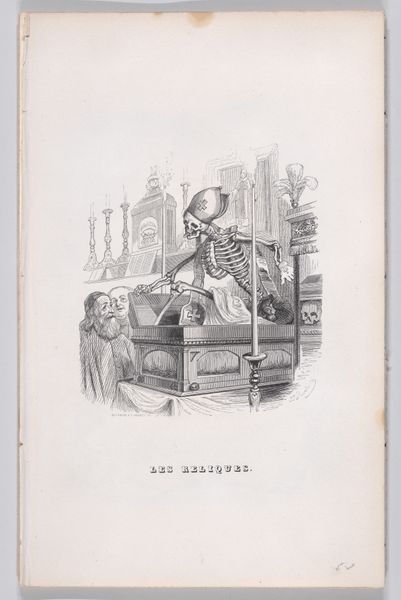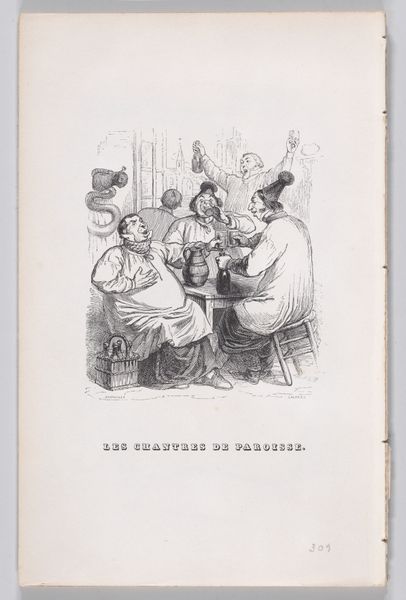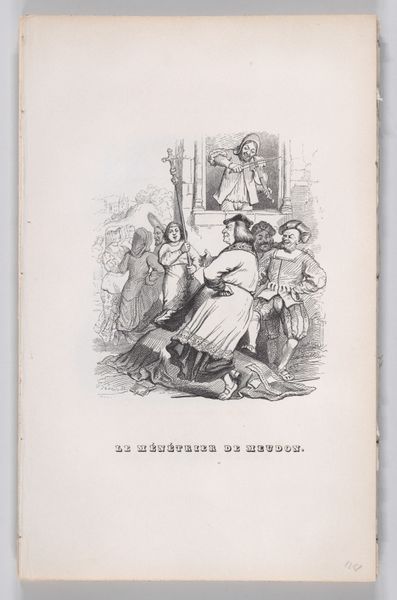
"The Death of Charlemagne" from The Complete Works of Béranger 1836
0:00
0:00
drawing, print, intaglio, paper, engraving
#
drawing
#
narrative-art
# print
#
intaglio
#
paper
#
romanticism
#
history-painting
#
engraving
Dimensions: Sheet: 8 5/8 × 5 1/2 in. (21.9 × 14 cm)
Copyright: Public Domain
Editor: So, this is J.J. Grandville's "The Death of Charlemagne," an engraving from 1836, part of a book of illustrations. The scene feels very stiff, formal, and somber given the event. What strikes you about it? Curator: Notice how Charlemagne, despite his illness, is enthroned—a deliberate act to ensure the continuity of power. Consider the symbols embedded here: the crown, obviously representing rulership; the architectural details reminiscent of a church, hinting at the intertwined relationship between the monarchy and the Church, further reinforcing a type of power granted by divine right. Editor: So, the visual language suggests it’s not just about one man’s death. Curator: Precisely. Death is a moment, but legacy, cultural memory—these stretch through time. Look at the bishop whispering; the artist may be signaling political intrigue, the next succession already being planned. This artwork isn't just about Charlemagne, it’s about the ongoing story of power, its transfer, and its endurance. The buildings framed by the architectural arch may signal either past achievements or ongoing cultural continuity. What do you make of that crouched figure? Editor: He seems almost… detached, grieving but powerless, almost frozen. Curator: Perhaps he's embodying the anxiety of a leaderless nation or a personal contemplation of mortality, standing as an emblem of human fallibility in the face of inexorable power. The image operates on both a historical and psychological level, engaging collective and personal ideas. Editor: That’s a fascinating point. I had only seen it as a straightforward depiction of death. Curator: Think of it as Grandville creating a historical narrative and also exploring the human drama of political life and power. Death becomes a lens through which larger societal structures are viewed, inviting us to reflect on what symbols a society perpetuates.
Comments
No comments
Be the first to comment and join the conversation on the ultimate creative platform.
